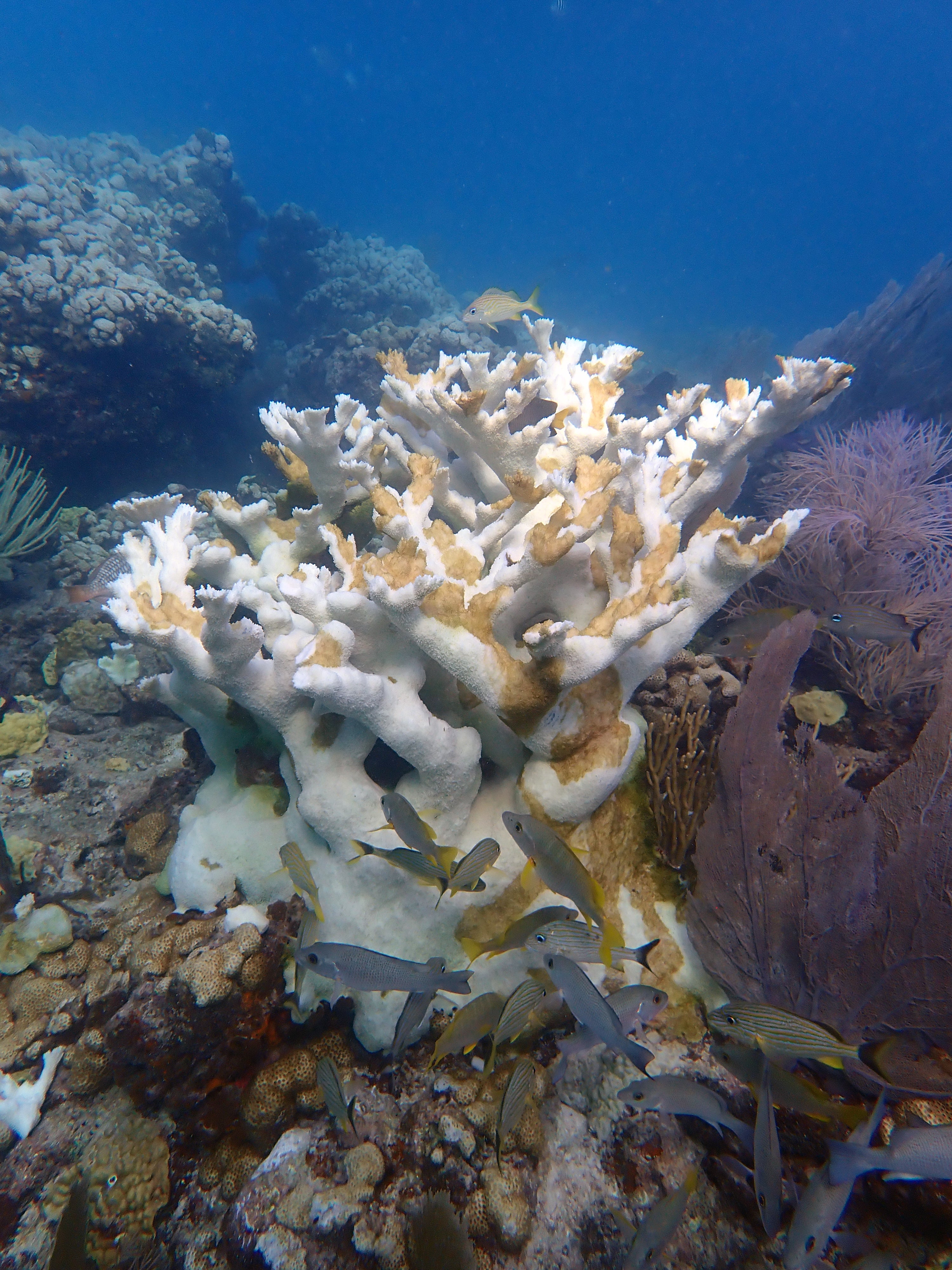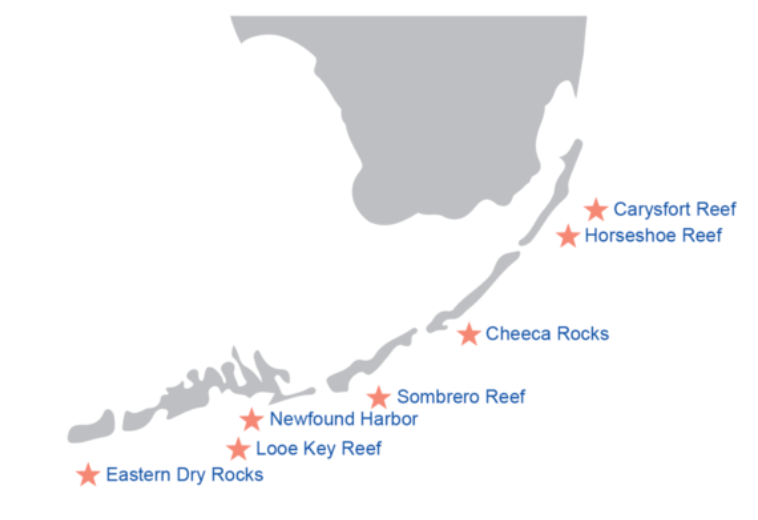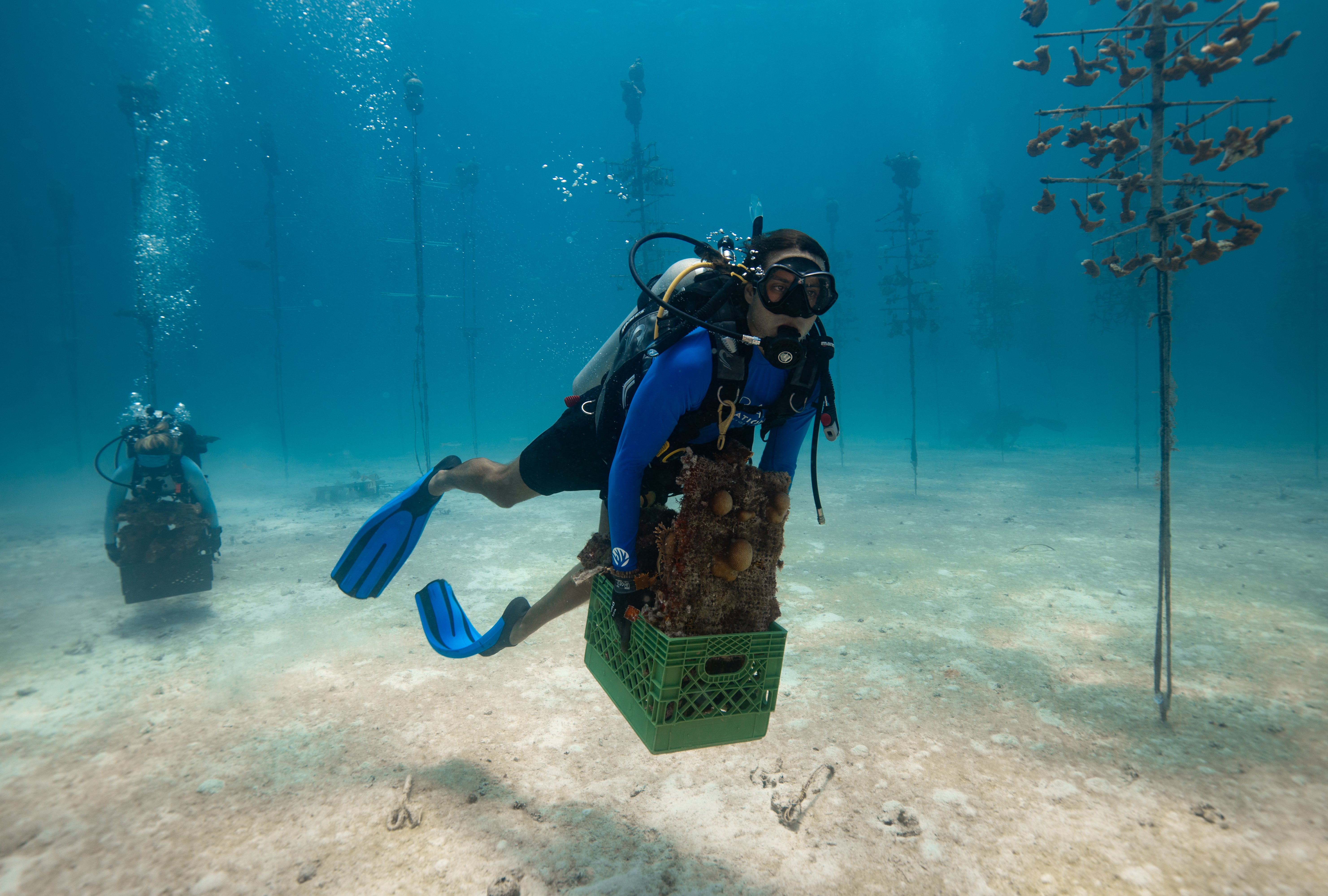‘Hot-tub’ temperatures in Florida waters causing coral reef die-off
One area, known as Sombrero Reef, has had 100 per cent coral mortality
The relentless and extreme heatwaves sweeping the world are not only impacting people but are devastating the natural world.
In Florida, news of a potentially world record-breaking sea surface temperature (SST) record emerged on Monday. A temperature of 101.1F (38.4C) was registered at Manatee Bay – an astounding high even after weeks of record-breaking heat in Florida Bay and the Keys, WFLA News’ Chief Meteorologist and Climate Specialist Jeff Berardelli reported.
Dr Jeff Masters, a hurricane scientist for NOAA, noted that these were “common hot-tub temperatures” and if confirmed, 101.1F would be a world-record.
While official SST records are not kept, he added, a temperature of 99.7F (37.6C) was recorded in Kuwait bay, according to a study in 2020.
Florida’s coral reef is one such victim with die-off of the fragile system happening at an alarming rate due to abnormally high ocean temperatures, marine scientists have warned. Over the last 40 years, specific reefs in Florida have lost upwards of 98 per cent of historical cover of the reef-building stony corals.
One area, known as Sombrero Reef, has had 100 per cent coral mortality, according to the Coral Restoration Foundation, along with almost all the corals in the nearby Looe Key Nursery. At another reef, Cheeca Rocks, 99 per cent of corals are bleached.
It is too early to know what coral mortality will look like across the long-expanse of Florida’s Coral Reef, researchers said.
“Climate change is our present reality,” said Dr R Scott Winters, CEO of the foundation, in a statement. “The impact on our reefs is undeniable.”
The Florida reef, which runs from Miami to Key West, is the third largest barrier reef in the world and the only one in the continental United States. Reefs are a crucial part of ocean ecosystems and 25 per cent of marine species rely on them.
In the last week, the National Oceanic and Atmospheric Administration (NOAA) issued an Alert Level 2 on its coral bleaching warning system (the scale runs Levels 1-5). A Level 2 alert is issued when the average water surface temperature is 1.8F (1C) above normal for eight weeks in a row.
Coral colours run the gamut from browns and greens to vibrant blues and purples due to the microscopic algae which live in its skeleton.
“Bleaching”, which turns the coral to a ghostly white, is a sign that the species are in big trouble and more susceptible to disease and starvation.
Florida, like much of the southern half of the US, has experienced relentless heat and humidity in the past two months.


Excessive heat warnings were issued for southern Florida on Monday with highs in the 90Fs and lows in the 80Fs, which may break records over the next couple of days, the National Weather Service reported.
Ocean temperatures have also been abnormally high. The sea surface temperature in the Florida Keys is averaging 91F (33C) – far above the typical mid-July temperature of 85F (29.5C), NOAA’s Coral Reef Watch program told the AP.
These temperatures are being reached weeks earlier than in past years, NOAA noted.
Andrew Bruckner, from the Florida Keys National Marine Sanctuary, told the AP that some reefs began showing the first signs of bleaching at the start of July, and then this weekend, some reefs lost all their color. That had never been recorded before the start of August as the peak for bleaching typically happens in late August or September.
If extreme temperatures fail to break, the consequences could be devastating. But a change in conditions would provide the reef with much-needed respite.

A tropical storm or hurricane could churn the water and cool it down, according to NOAA. Dust clouds, which cross the Atlantic from the Sahara Desert, could also lower temperatures by blocking some of the sun’s intensity.
However major storms are also a threat to coral reefs as storm surge and powerful waves can break the coral colonies or smother them with sand.
A coalition of organisations, coordinated by NOAA, is ramping up efforts to save the reefs, part of an ongoing 20-year program to rebuild the systems.
“Despite the devastation, we remain hopeful and determined. Sites in the Upper Keys, where the water is cooler, are not yet showing such dramatic declines, which gives us time to act,” said Dr Phanor Montoya-Maya, restoration programme manager for the Coral Restoration Foundation.
“We are now rescuing as many corals as we can from our nurseries and relocating key genotypes to land-based holding systems, safeguarding our broodstock – potentially, the last lifeline left many of these corals.”
With additional reporting from AP
Join our commenting forum
Join thought-provoking conversations, follow other Independent readers and see their replies
Comments


Bookmark popover
Removed from bookmarks